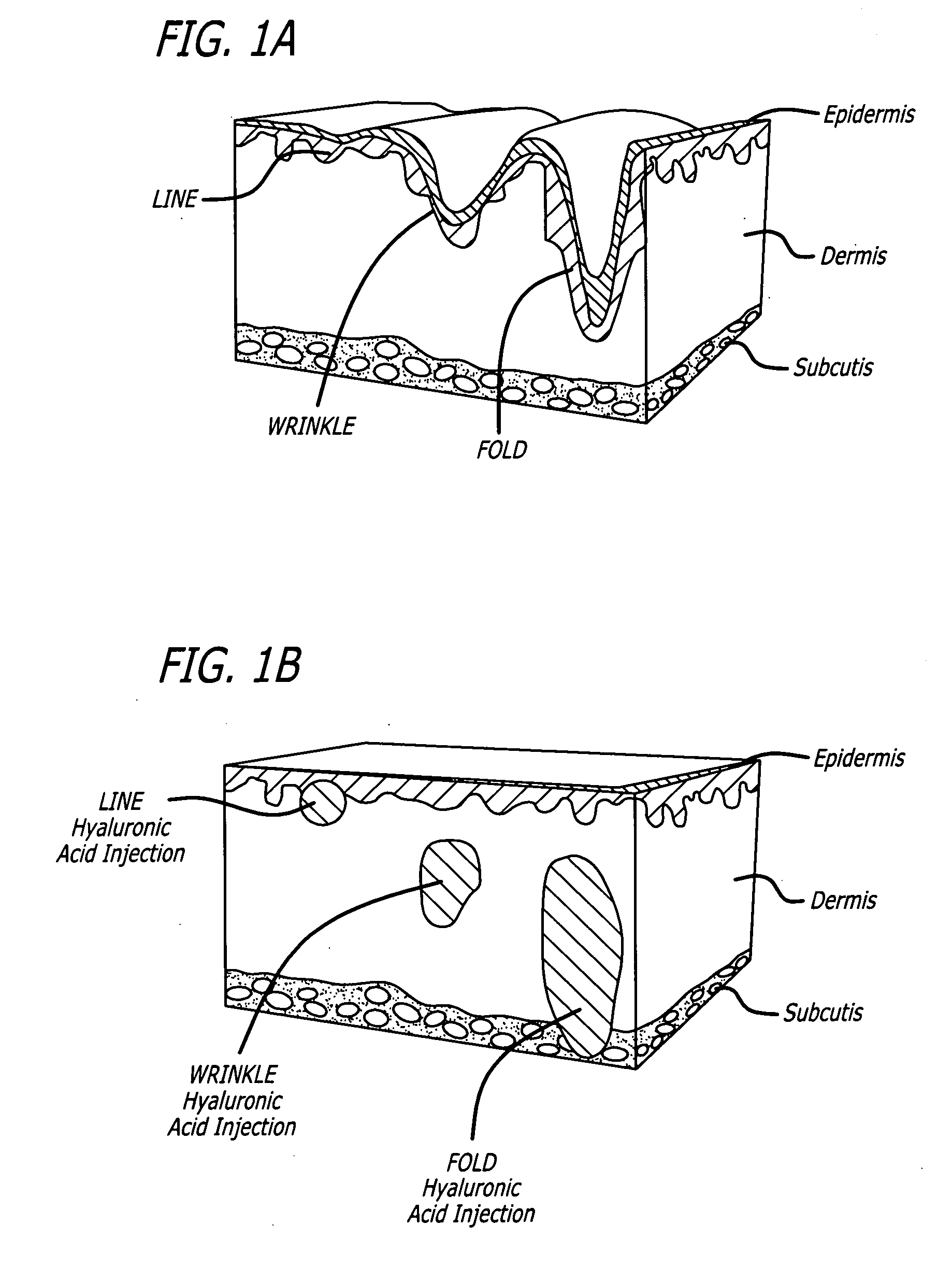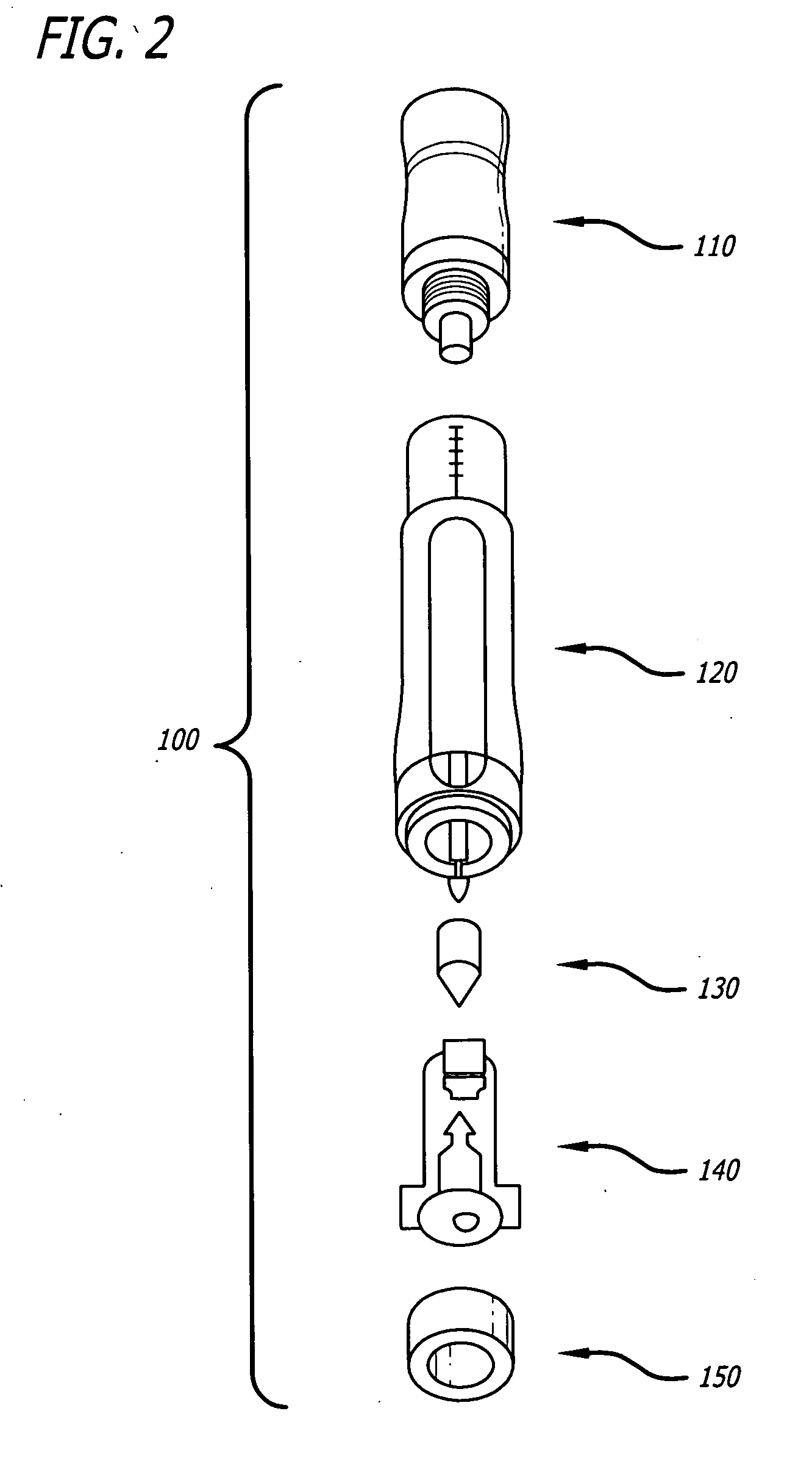Soft tissue augmentation by needle-free injection
a technology of soft tissue and injector, which is applied in the field of soft tissue augmentation by needle-free injection, can solve the problems of aging skin losing collagen, increasing the rate of its degradation, and reducing the production of hyaluronic acid in the skin, and achieves the effect of precise placement of dermal filler materials
- Summary
- Abstract
- Description
- Claims
- Application Information
AI Technical Summary
Benefits of technology
Problems solved by technology
Method used
Image
Examples
example 1
[0052]The following experiment was run to determine appropriate velocity and diameter, as well as control of velocity and diameter, of jets of viscous dermal filler material ejected from a needle-free injector.
[0053]A commercial jet injector (Vitajet 3 by Bioject Inc.) was used to create jets of Hylaform® gel, a hyaluronic acid dermal filler available from Allergan, Inc. of Irvine, Calif., collagen, and hydroxypropylmethylcellulose (HPMC) with various diameters and velocities. The velocity of the jet was controlled by adjusting the amount of spring compression as well as the piston friction of the injector. Two plastic rings, having thicknesses of 3 mm and 1.6 mm, were provided with the jet injector for increasing spring compression. The rings were tested in use individually and together.
[0054]The nozzles came in two different orifice diameters: 152 μm and 178 μm. These nozzles were modified to increase the range of nozzle diameters studied. Ruby orifice crystals (from Sapphire Engi...
example 2
[0061]This experiment was run to confirm that fairly viscous dermal fillers could be properly injected into a substantial material. Specifically, the parameters identified in Example 1 were used to inject collagen, HPMC, and Hylafomm® gel into polyacrylamide gels. FIG. 5 shows an example of a Hylaform® gel injection into a polyacrylamide gel. The Hylaform® gel was labeled using sulforhodamine B. The image shows a cylindrical entry region followed by a circular dispersion into the gel.
example 3
[0062]This experiment was run to test various parameters for injecting dermal filler materials into human skin using a needle-free injector.
[0063]Human skin was procured through the National Disease Research Interchange. Skin was cleaned to remove fat and subdermal tissues, and was frozen to −70° C. until the time of experiments. All experiments were performed according to institutionally approved protocols. At the time of jet injection, a piece of skin was placed on wax paper and sealed on the sides with medical tape. The skin was supported by a mesh, which was in turn placed on a chamber filled with saline. A 5 mm stainless steel spacing ring was placed on the end of the jet injector nozzle to separate the nozzle from the skin sample.
[0064]A model radiolabeled drug, mannitol, was added to the collagen, Hylaform® gel, and HPMC that were injected into the skin samples. To assess mannitol delivery, a solution of 3H labeled mannitol (from American Radiolabeled Chemicals, Inc) was adde...
PUM
 Login to View More
Login to View More Abstract
Description
Claims
Application Information
 Login to View More
Login to View More - R&D
- Intellectual Property
- Life Sciences
- Materials
- Tech Scout
- Unparalleled Data Quality
- Higher Quality Content
- 60% Fewer Hallucinations
Browse by: Latest US Patents, China's latest patents, Technical Efficacy Thesaurus, Application Domain, Technology Topic, Popular Technical Reports.
© 2025 PatSnap. All rights reserved.Legal|Privacy policy|Modern Slavery Act Transparency Statement|Sitemap|About US| Contact US: help@patsnap.com



